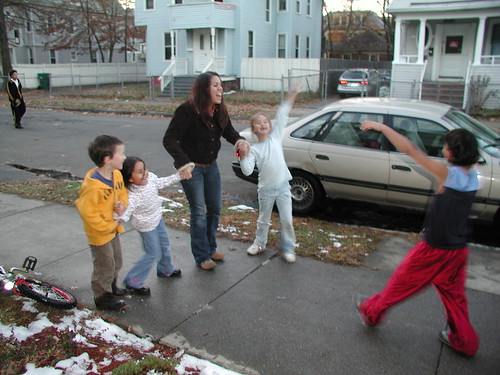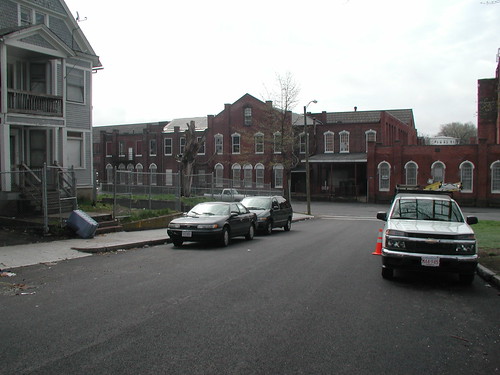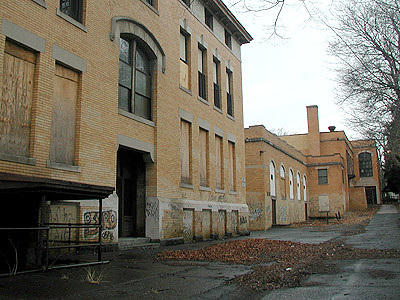Springfield resident Charles Rucks is running for City Council. Following are his answers to questions I sent via email—just in late yesterday morning from the candidate. The interview is part of an attempt to reach candidates for City Council and learn more about their background, unique qualities, and thoughts about the city.

INTERVIEW WITH CHARLES RUCKS
About the candidate
Charles Rucks is the executive director of Springfield Neighborhood Housing Services, Inc. He has a bachelor’s degree from the US Naval Academy, an MBA from Cornell University, and a law degree from Western New England College.
How old were you when your family moved to Springfield? What brought you to the city?
I was five months old. My father came up from Mississippi to work in the tobacco fields when he was 19. After he got a permanent job, he sent for his 17-year-old bride and five-month-old son, and my mother and I came up on the train. He bought a house here when he was 21. My brother still lives in that house.
Who are some people you’ve most looked up to in life, and why?
What I am as a human being is due to my mother, and what I am as a man is due to my father. Particularly as I’ve grown older, I’ve come to appreciate that they didn’t let their limitations hold us children back. They expected us to achieve at a high level.
Mrs. Harrell was my first grade teacher, and she called me her little star. She lived in my neighborhood.
Various coaches, particularly my boxing coach who help me adapt to a very challenging environment I wasn’t used to at the Naval Academy. General Chuck Krulak, my mentor in the Marine Corps, who went on to become Commandant of the Marine Corps and a member of the Joint Chiefs of Staff under President Clinton.
All these individuals were people I learned something from, and they all brought a different perspective. They each saw something in me, and helped bring it out.
Neighborhoods
How has Springfield changed since you were a kid?
It’s changed in a number of ways. Neighborhoods are much more diverse than when I was growing up. There is more interaction among different nationalities and ethnic groups.
 There were houses on every lot, and families in every house, and most of those families had a father present. It was the exception rather than the rule if a father wasn’t present.
There were houses on every lot, and families in every house, and most of those families had a father present. It was the exception rather than the rule if a father wasn’t present.
The schools were effective; if you graduated from a Springfield high school, you had a solid education, and you were employable. The schools provided consistent feedback to parents, and parents and schools collaborated on discipline.
Now, far more children grow up without a father in the picture, the schools are not effective, the dropout rates are unacceptably high. There’s blight throughout several of our neighborhoods. Springfield was a place of manufacturing jobs; now it’s a service economy.
What do you miss most about the city from your childhood?
I miss how I felt safe as a child going out to play, going to a friend’s house, or out to play baseball. I never felt fear of abuse. However, as an adult, I worry about the safety of my nieces and nephews, and the young people I coach and mentor.
Why do you choose to live where you do?
I choose to live close to where I grew up because I like it there I’m close to the agency where I work, Springfield Neighborhood Housing Services; to Dunbar Community Center, where I coach and mentor; and close to my place of worship.
Because I choose it, there are no drawbacks. No one place is perfect, but if it got to the point where I didn’t like it, I’d move.
 Some people suggest Springfield needs to deal with small problems so they don’t become big ones. Would you agree?
Some people suggest Springfield needs to deal with small problems so they don’t become big ones. Would you agree?
I’d rather talk about the public policy decisions that have had an adverse impact on the quality of life in the city.
The decision to close the schools in Mason Square, for instance, resulted in there being no schools within walking distance, so young families with children stopped moving in there. The neighborhood grew older and older, and withered on the vine. Old Hill is a perfect example of this.
The issue isn’t whether the problem is small or big; rather, it is city government making strategic decisions, and recognizing the long-term impact of those decisions.
Do you know people who are overwhelmed by chronic, negative quality of life problems? What can they do to address the matter?
The issue isn’t what they can do, but what the city can do to support them.
I see people who try to maintain their homes and lifestyles against the tide of decay. But because of the lack of support from local government, their neighborhoods continue to get worse and worse. That’s what I think the challenge is.
There has clearly been decades of neglect to some neighborhoods, while the focus has been on downtown. Downtown is important too, but it doesn’t have to be an either/or proposition. What attracted my family to Springfield wasn’t the downtown, but a strong neighborhood fabric that gave their children a chance to maximize their talents.
The wide variety of types of neighborhoods and housing in the city is perhaps one of its selling points. In what ways do you think the city capitalizes on or squanders that variety in housing stock?
 It squanders its housing stock because of a consistent lack of investment in older neighborhoods where distinctive architecture is found.
It squanders its housing stock because of a consistent lack of investment in older neighborhoods where distinctive architecture is found.
My agency is trying to reverse this decay, and is working with other agencies, such as Habitat for Humanity and local neighborhood councils, trying to replace aging housing stock with new homes on vacant lots, and rehabbing vacant houses to create first-time home-buying opportunities to low-income families.
What type of housing stock do you think the city lacks right now that it could benefit by providing?
It’s not one type of housing stock that is needed. I see two gaps.
One is a continuum of housing for low-income families: we need a continuum, starting with homeless shelters leading to temporary housing, then permanent housing, then home ownership. Now, wherever you are, that’s where you stay, creating bottlenecks in the whole system.
 The second gap is housing for young, upwardly-mobile professionals, specifically condos.
The second gap is housing for young, upwardly-mobile professionals, specifically condos.
This resource needs to be developed in conjunction with a strategy to extend commuter train lines to Springfield, west from Worcester and north from New Haven. Young people could then take advantage of job opportunities in Boston or New York without having to move out of the city. It would solidify the city’s identity as a city of homes.
When these folks marry, and have children,they move to larger, detached homes and contribute to the strength and vitality of our neighborhoods.
Click here to read the entire interview.


